Sequences 1: Sequences & iterators
Although not often directly thought about, sequences are one of the most fundamental components of the Swift language.
If you’ve used a for-in loop, which you probably have, then you have used a sequence. Prior to swift 3, swift included a classic c-style for loop but now only the sequence consuming for-in loop remains.
for element in aSequence {
// do something with element
}
for element in ["a", "b", "c"] {
// do something with element from Array
}
for i in 0..<10 {
// do something with i from Range
}
for (key, value) in ["a": 1, "b": 2, "c": 3] {
// do something with key & value from Dictionary
}
A Sequence in Swift is a protocol that represents a series of values, which can be iterated over one by one. The Sequence protocol is central to many Swift collection types, including ranges, arrays, dictionaries, and sets. It provides a unified way to work with different kinds of collections.
protocol Sequence<Element> {
associatedtype Element where Self.Element == Self.Iterator.Element
associatedtype Iterator : IteratorProtocol
func makeIterator() -> Self.Iterator
}
protocol IteratorProtocol<Element> {
associatedtype Element
mutating func next() -> Self.Element?
}
A Simple Implementation
The following simple implementation of a sequence, and its iterator, which will return all the characters of the latin alphabet.
public struct AlphabetIterator: IteratorProtocol {
public typealias Element = Character
private var position = 0
public init() {}
public mutating func next() -> Element? {
guard position < 26 else { return nil }
defer { position += 1 }
return Character(UnicodeScalar(position + 97)!)
}
}
public struct AlphabetSequence: Sequence {
public init() {}
public func makeIterator() -> AlphabetIterator {
AlphabetIterator()
}
}
Why is iterator separate from sequence
You may wonder why a sequence has a separate iterator type that it has to create. Well, there are two reasons. Firstly, a Collection (a subtype of Sequence) can be iterated over multiple times. If the next method was part of the sequence itself, there would need to be a way to manually return the offset to the start to allow it to be iterated over again. That would add complexity to using it and introduce a potential class of bugs from passing a sequence to an element which has already been iterated over. The second and greater reason is that most sequences, including all the standard library collection types, are structs. Using the next method modifies the offset within the sequence and that would require all collections to always be mutable to iterate, something the creators of Swift very much discourage. By having a separate iterator type, which a sequence can provide, both of these issues can be avoided.
The extension methods
The real power of Sequence is in its included extension methods.
 These extension methods provide a large number of handy operations which can be performed on the sequence, such as sorting, shuffling, splitting, joining.
These extension methods provide a large number of handy operations which can be performed on the sequence, such as sorting, shuffling, splitting, joining.
Also provided are the ‘higher order’ functions, map, filter, reduce (and their offshoots compactMap & filterMap).
There are even more useful extension methods for Sequences (and Collections) in the Swift Algorithms Package.
And of course you can easily create your own. Let’s look at a really simple example:
extension Sequence where Element: AdditiveArithmetic {
func sum() -> Element {
self.reduce(.zero, +)
}
}
We have extended any Sequence which elements conforms to AdditiveArithmetic (so all numbers) with a method which will consume the sequence and reduce it down by adding all of the elements together.
A few potential shortcomings
There a few things to understand about sequences when compared to collections which we will see later:
- They do not guarantee multiple traversals. Potentially a sequence could only be consumed once and then would no longer be available. An example would be a Sequence which reads lines from a file; once you reach the end you would need to close the file and then open again with a new sequence to iterate through the lines. If you wanted to consume the sequence repeatedly you would need to insert all of the elements into a Collection, like Array.
- A number of extension methods which need to modify the order of elements in a sequence (like
sorted()orreversed()) will need to do this and so will return an Array containing all of the elements in their new order.
- A number of extension methods which need to modify the order of elements in a sequence (like
- You cannot randomly access elements in the middle of the sequence; you need to iterate though until you reach that point.
As you could probably guess, the next entry will be on Collections. See you there.